Project
Millbrook Millennium Green
Wetlands Project, Kirkby
Client: Mersey Rivers Trust in partnership with Knowsley Council
Final Value: £12,143
Start Date: Nov 2023
Finish Date: Nov 2023
Background
Millbrook Millennium Green, located in Kirkby and managed by Knowsley Council, is one of the largest central green spaces in the area. The park features Simonswood Brook, four ponds, wetlands with reed beds, extensive grass fields, and wooded areas. It serves as a vital ecological corridor, connecting various green spaces, including Mill Dam Park, St. Chad’s Gardens, and Kirkby Valley.
Network Rail, as part of its commitment to a Net Positive Biodiversity Gain (BNG) for a new train station at Headbolt Lane in Kirkby, partnered with Mersey Rivers Trust and Buckingham Group Contracting to deliver environmental benefits through BNG.
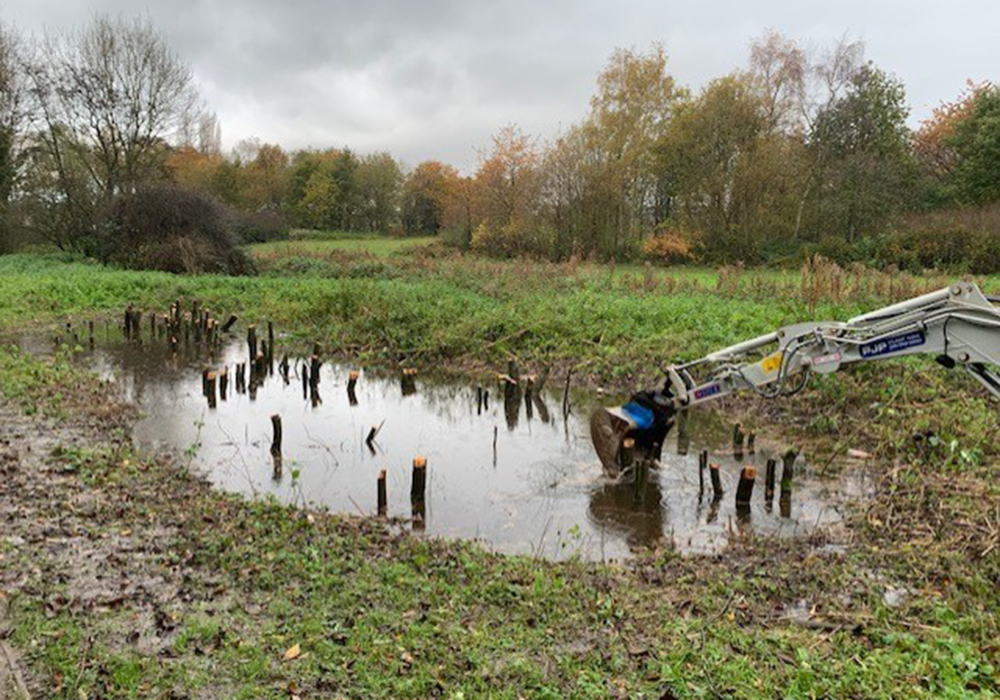
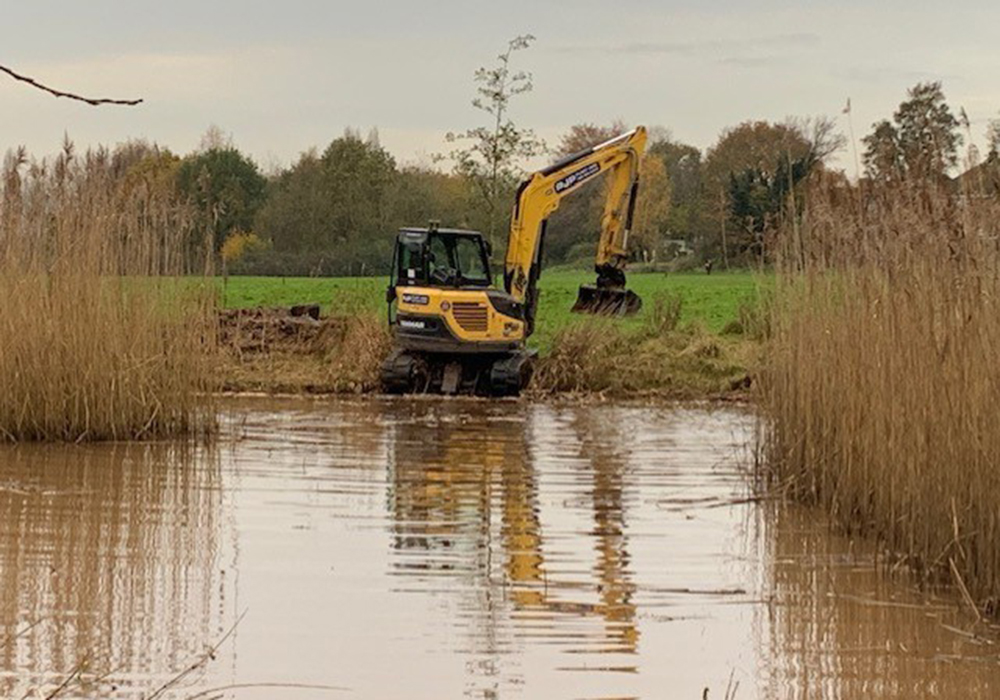
Project Aim
Millbrook Millennium Green was one of five sites to have habitat and enhancement works carried out covering approximately 4,000 m2 of poor-quality woodland to be developed into a large wetland habitat. The project is the first of its kind in the Kirkby region to use the BNG metric.
• Remove 80% of the excess vegetation from each pond to restore water retention capacity.
• Deepen and re-landscape the ponds to create a more diverse habitat for aquatic wildlife, including amphibians, birds, invertebrates, and the endangered Water Vole found near Simonswood Brook.
• Improve the ecological balance by controlling invasive species like Typha bullrush and willow, thus allowing native species to thrive.
CCNW Solution
The project team, CCNW, began by conducting an ecological assessment, which included a survey for Great Crested Newts. While no evidence of these newts was found, Smooth and Palmate Newts were present, requiring a careful approach to ensure their protection.
CCNW’s ecological team provided a Toolbox Talk to all workers, outlining ecological avoidance measures, including careful excavation and spoil management. The tree team carried out selective scrub and tree clearance around the ponds, removing overgrown willow and alder trees that had caused the ponds to dry out.
The ponds were then re-excavated to enhance their water-holding capacity. In the largest pond, 0.35 hectares of overgrown reed beds were cleared, and a more varied pond structure was created. 60-80% of the reeds were removed, while some areas were left as open water to promote biodiversity.
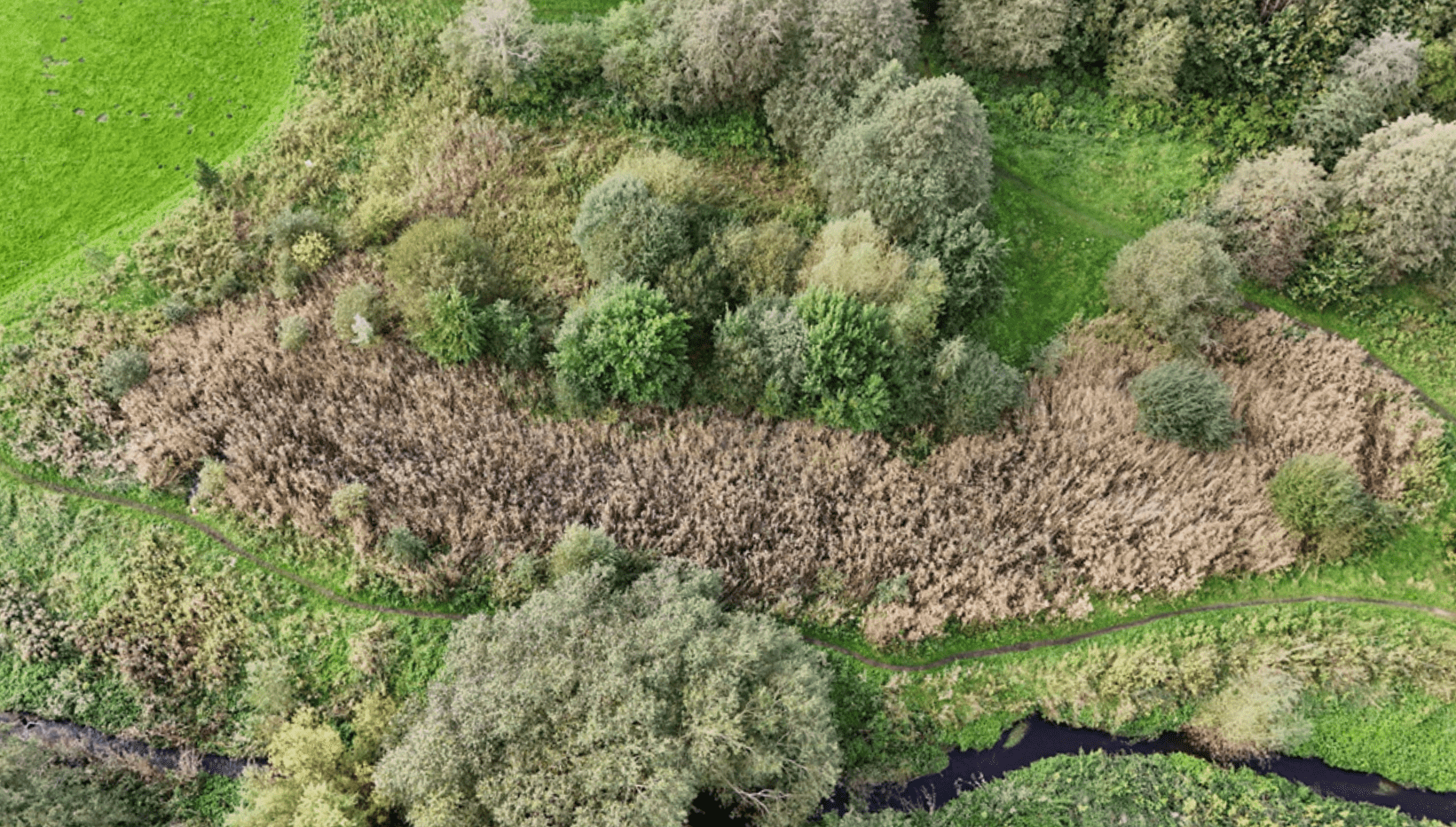
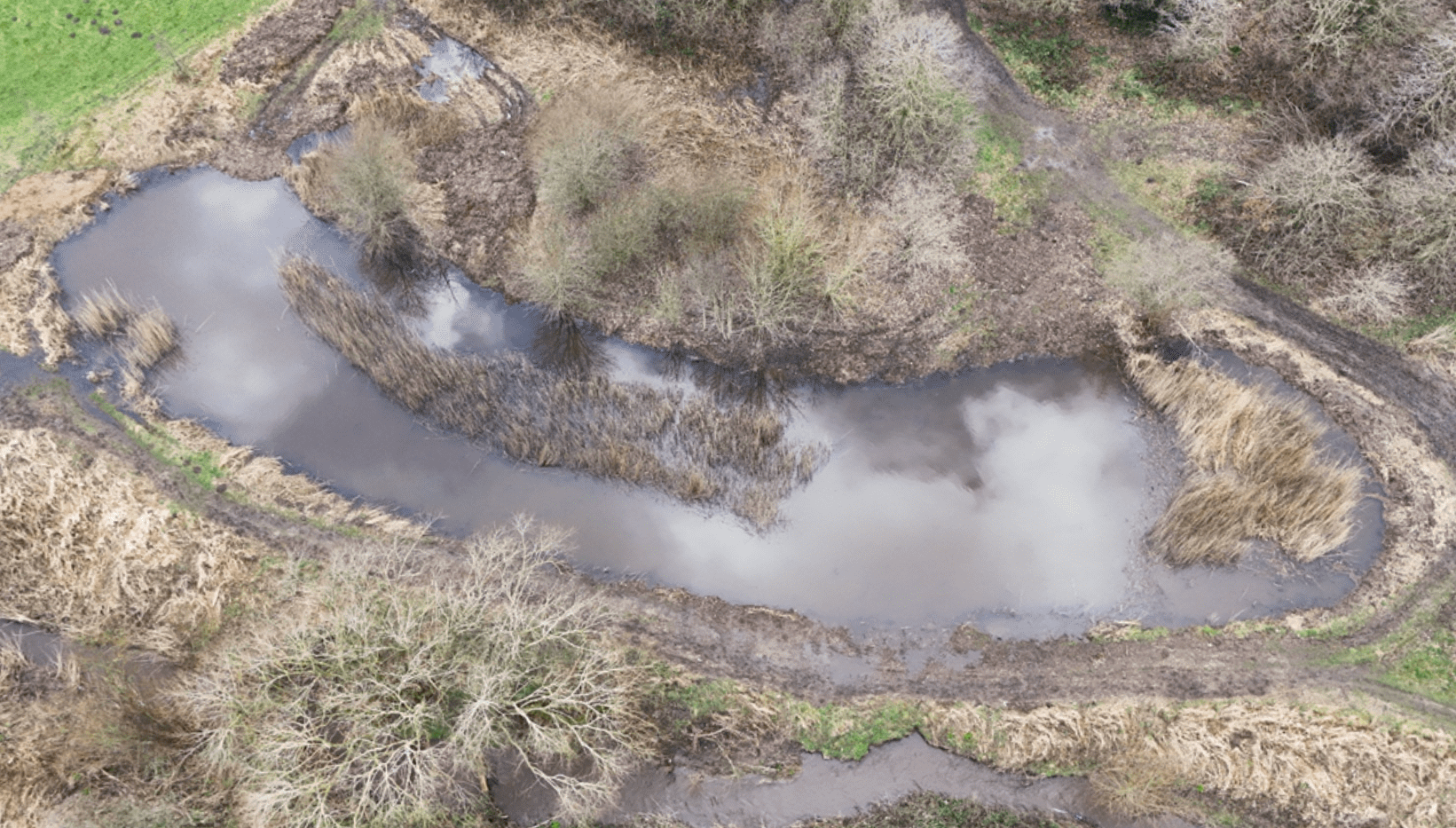
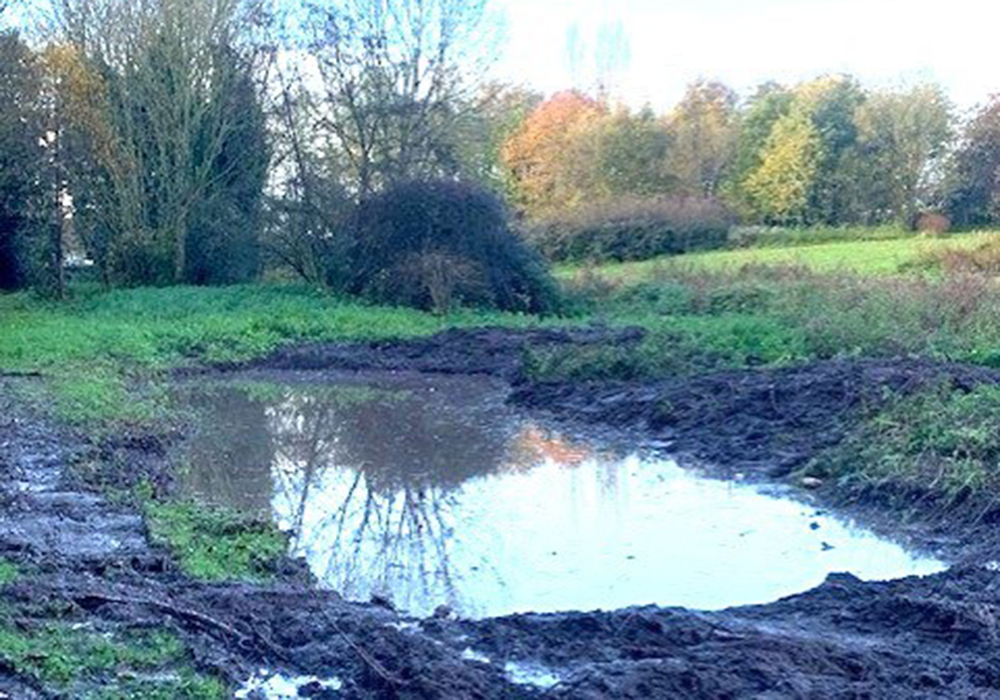
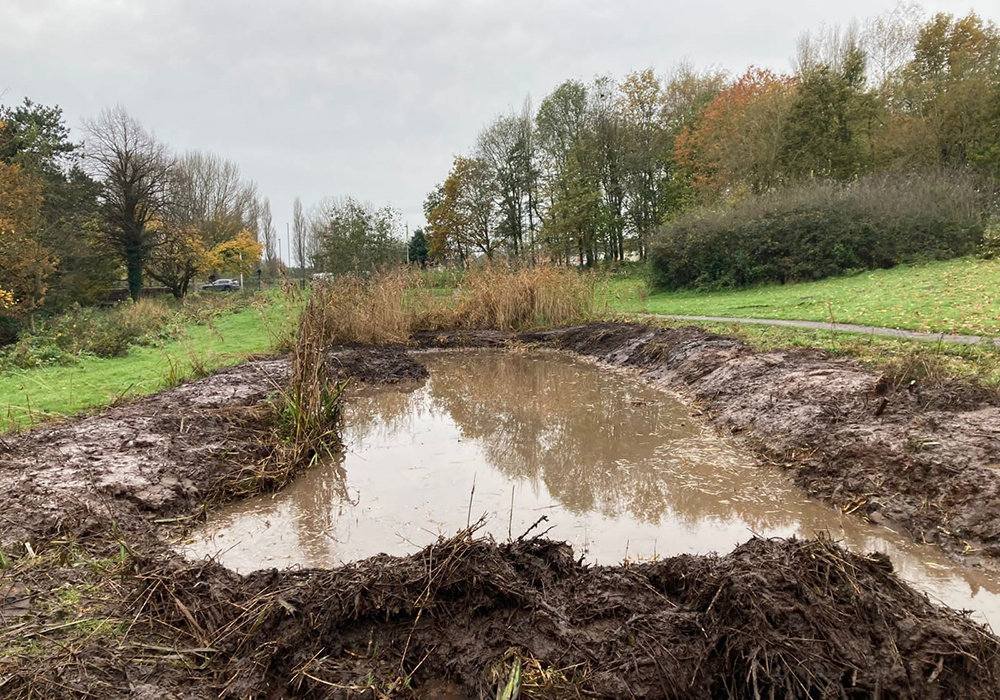
Special Features
Biodiversity Net Gain Wetland Creation
Services
Ecological Toolbox Talk
Vegetation Management
Re-seeding and Replanting
Footpath Improvement
Wetland Creation
CCNW Solution
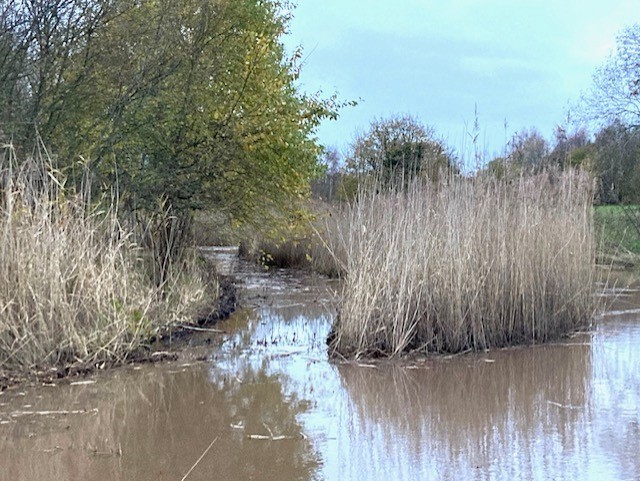 Vegetation Management: Coppicing and thinning techniques were used to clear excess vegetation. All cleared plant material was chipped and left on-site as habitat piles to suport local wildlife.
Vegetation Management: Coppicing and thinning techniques were used to clear excess vegetation. All cleared plant material was chipped and left on-site as habitat piles to suport local wildlife.- Re-seeding and Replanting: The cleared areas were reseeded with a wetland seed mix, and some of the common reed was transplanted to Mill Dam Park to assist in wetland creation there.
- Footpath Improvement: Spoil from excavation was used to enhance footpaths and create safe walking conditions
By removing the invasive species and reshaping the ponds, the project created a more sustainable wetland environment that supports a variety of wildlife. The re-landscaping efforts allowed for the natural regeneration of native plant species, enhancing the area’s overall biodiversity. The ponds now serve as feeding and breeding grounds for various amphibians, birds, and invertebrates, with the potential for long-term ecological health.
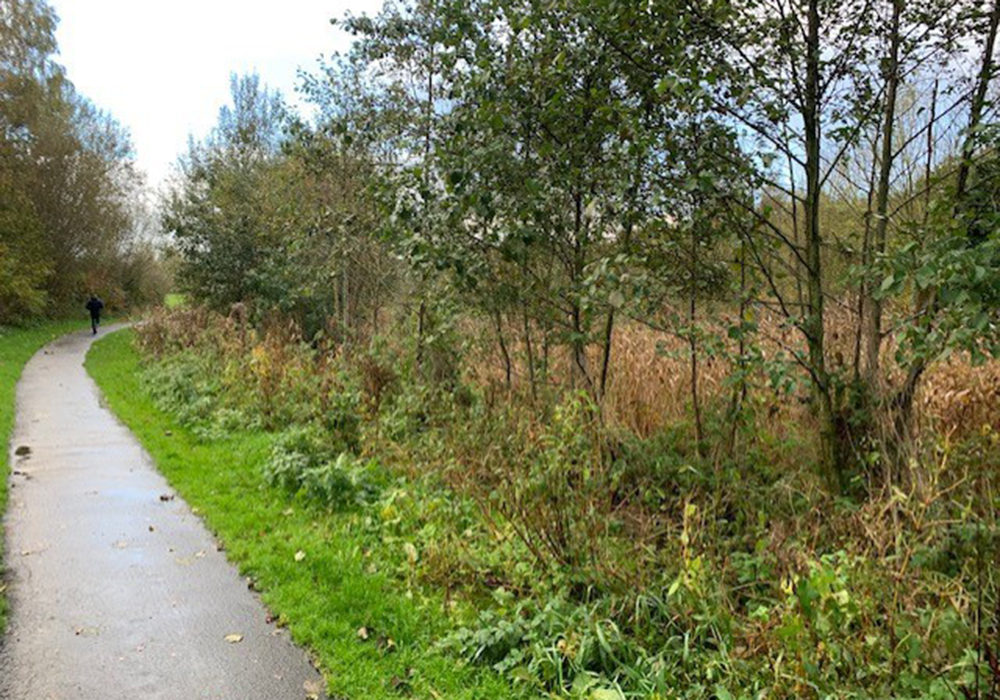
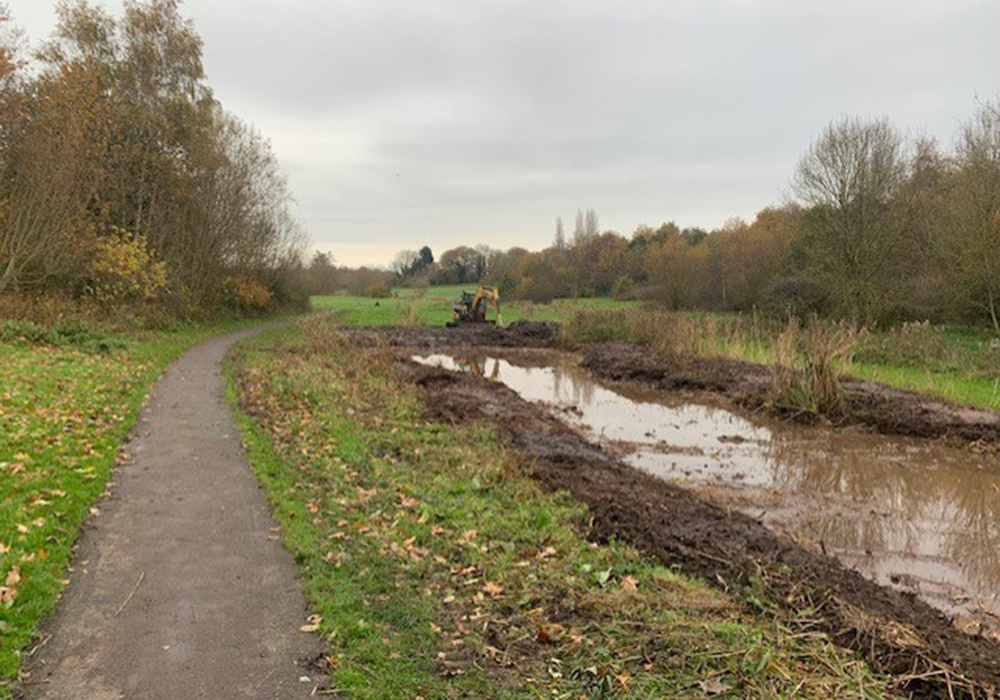
Start a conversation with us today

If you wish to sign up to our quarterly newsletter, please fill out the subscription below.
